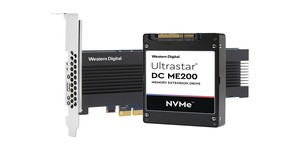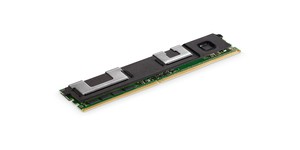
Intel has confirmed that it is to launch storage devices based on the 3D XPoint technology, co-developed with Micron, next year under the brand Intel Optane.
Intel unveiled 3D Xpoint in July this year, promising a replacement for traditional NAND flash in non-volatile memory which would offer a real 'universal memory.' Some 1,000 faster than NAND flash, the hardware is claimed to be only marginally slower than volatile dynamic RAM (DRAM) while also offering high endurance and surviving write cycles that would have traditional solid-state drives weeping. While both Intel and its partner Micron were eager to discuss the benefits of the technology, both shied away from a launch date beyond the promise that 'select customers' would be receiving hardware samples before the end of the year.
At the Intel Developer Forum this week, however, Intel's Brian Krzanich has opened the kimono to reveal a promise: 3D Xpoint commercialisation by next year, under the new brand name Intel Optane. Optane, Krzanich explained, will be available for both enterprise and consumer use - with a separate presentation detailing the gains in graphics performance with Intel's Skylake chips promising that Optane would be of considerable interest to gamers - in PCIe-connected and DIMM formats. The former will be found in everything from servers and desktops to ultra-portable devices, Intel hopes, while the DIMM format modules will compete with other non-volatile memory devices in the enterprise sector.
While Krzanich confirmed a 2016 launch date for the Intel Optane devices, and even demonstrated a prototype 3D Xpoint SSD claimed to be seven times faster than Intel's best NAND flash device, he was quiet when it came to pricing - but, despite the company's claims that manufacturing of 3D Xpoint modules is inexpensive, expect to pay a premium over NAND flash.
Intel unveiled 3D Xpoint in July this year, promising a replacement for traditional NAND flash in non-volatile memory which would offer a real 'universal memory.' Some 1,000 faster than NAND flash, the hardware is claimed to be only marginally slower than volatile dynamic RAM (DRAM) while also offering high endurance and surviving write cycles that would have traditional solid-state drives weeping. While both Intel and its partner Micron were eager to discuss the benefits of the technology, both shied away from a launch date beyond the promise that 'select customers' would be receiving hardware samples before the end of the year.
At the Intel Developer Forum this week, however, Intel's Brian Krzanich has opened the kimono to reveal a promise: 3D Xpoint commercialisation by next year, under the new brand name Intel Optane. Optane, Krzanich explained, will be available for both enterprise and consumer use - with a separate presentation detailing the gains in graphics performance with Intel's Skylake chips promising that Optane would be of considerable interest to gamers - in PCIe-connected and DIMM formats. The former will be found in everything from servers and desktops to ultra-portable devices, Intel hopes, while the DIMM format modules will compete with other non-volatile memory devices in the enterprise sector.
While Krzanich confirmed a 2016 launch date for the Intel Optane devices, and even demonstrated a prototype 3D Xpoint SSD claimed to be seven times faster than Intel's best NAND flash device, he was quiet when it came to pricing - but, despite the company's claims that manufacturing of 3D Xpoint modules is inexpensive, expect to pay a premium over NAND flash.

MSI MPG Velox 100R Chassis Review
October 14 2021 | 15:04








Want to comment? Please log in.